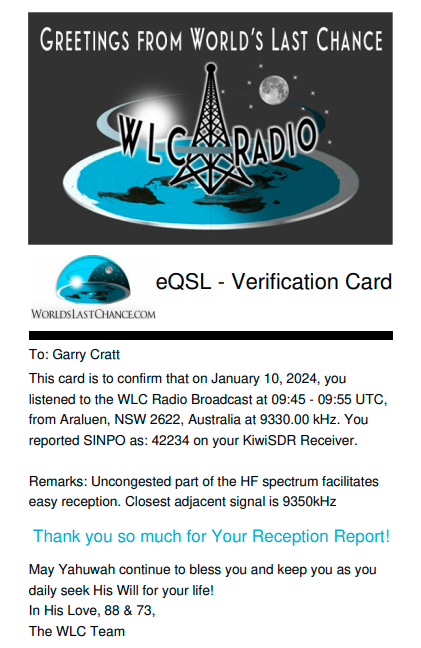
In a significant move to modernise its broadcasting infrastructure, Radio Televisyen Malaysia (RTM) has breathed new life into its iconic shortwave transmitter site located in Kajang, just south of Kuala Lumpur. Established in the early 1970s, the site has played a pivotal role in RTM’s history, even as the broadcaster scaled back its shortwave offerings over the years.
The need for rejuvenation arose when an aging Transradio DMOD3 exciter, responsible for feeding the site’s Continental Electronics shortwave transmitter, faced technical issues. Responding to the challenge, RTM made the decision to usher in a new era by installing the RFmondial LVe digital broadcast exciter.
While RTM’s current plans focus on analog broadcasts, the LVe introduces a forward-looking capability, supporting the potential for simulcasting both analog and DRM digital signals. This strategic upgrade positions RTM to adapt to evolving broadcasting standards and audience preferences.

RFmondial’s Dr. Albert Waal (right) with RTM engineer Yusuf Azizi. (Photo Courtesy of RFmondial)
Dr. Albert Waal, head of hardware development for RFmondial, expressed his enthusiasm for the project, stating, “It was a great honor to upgrade this famous Malaysian transmitter site and to work with the very professional and kind staff of station engineer Yusuf Azizi and his team.”
This transformative initiative not only safeguards the operational continuity of the RTM site but also underscores the broadcaster’s commitment to staying at the forefront of broadcasting technology. As RTM embraces the future, the LVe exciter stands as a symbol of innovation, ensuring the site’s continued significance in the broadcasting landscape.
Source: Radioworld – https://www.radioworld.com/

WBCQ is a shortwave station operating from Monticelle in Northern Maine, North America that transmits a wide (perhaps the widest) variety of programs on legal shortwave
The high-power antenna offers different radiation patterns and an antenna gain of up to 23 dB and uses a technology characterized by a single-shaft structural design,” according to Cestron International the installer of the antenna in a project summary.
The tubular shaft has a diameter of four meters. Its support design will absorb static and dynamic forces originating from the antenna components, allowing the system to function even under extreme weather conditions, according to Cestron.
The antenna consists of low- and high-band array antennas, positioned back to back, each equipped with a reflector screen, allowing WBCQ to access all shortwave frequency bands between 6 MHz and 26 MHz.
A computer-controlled and -monitored system manages rotation and turns toward the coverage area using the shortest possible path. “Intelligent drive control ensures the large rotating part of the structure is jolt-free, starting and braking to standstill with a high rotation speed of 1.2 degrees per second and a positioning accuracy of < 1 degree,” according to Cestron.
At 500 kW with an ERP of 20 MW, it is one of the most powerful shortwave stations in the USA.
See below QSL card Garry received from them.

 For the last 78 years, the Sydney to Hobart yacht race has been run on Boxing Day December 26.
For the last 78 years, the Sydney to Hobart yacht race has been run on Boxing Day December 26.
This year the cannon will sound at 1pm, signalling the start of the race once again. The Rolex Sydney to Hobart yacht race commences on 26 December and ends on December 31, 2023
This year 113 entrants will race the 628 nautical mile course. The oldest vessel in this years race was built in 1932.
All radio sked frequencies and times remain the same as previous years and are listed below.
Radio Relay Vessel, JBW will shadow the fleet throughout the race and will dock in Hobart with the fleet. STS “Young Endeavour” will be accompanying the Fleet south to Hobart and is designated as the standby radio relay vessel.
STS Young Endeavour was gifted to the people of Australia by the British government in 1988, as a gift to celebrate Australia’s bicentenary and is operated by the Australian Navy as a training vessel.
As the name suggests, the race is from Sydney to Hobart. Installation of an operational HF transceiver is mandatory for all vessels entered in the race.
HF and shortwave radio enthusiasts can listen in to position and weather reports during the race by monitoring the following frequencies:
Primary HF frequency: 4483 kHz USB
Secondary frequency: 6516 kHz USB
6516 kHz USB is constantly monitored by relay vessel “JBW” owned and donated for use during the race by Mr John Winning, owner of Appliances Online. JBW is a 70 foot motor cruiser.
Weather forecasts (Bureau of Meteorology):
4426 kHz, 8176 kHz, 12365 kHz and 16546 kHz, USB at 1030, 1430 and 1830 AEST daily, 2201 kHz, 6507 kHz, 8176 kHz and 12365 kHz USB at 0230, 0630 and 2230 AEST daily.
Tasmanian weather forecasts on the above frequencies at: 1130 and 1530 AEST
Tasmanian maritime radio:
2524 kHz, 4146 kHz, and 6627 kHz USB at 0745, 1345, 1633 and 1903 AEST
Position reports:
4483 kHz USB at 1835, and 0635AEST daily


